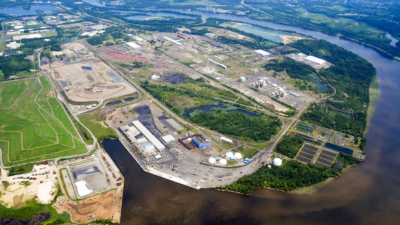U.S. Industrial Market on a Roll but Headwinds Starting to Pick Up
Our Q2 2018 U.S. Industrial Market Outlook Report highlights that led by core markets in the Inland Empire, Chicago, Atlanta and Dallas-Fort Worth, the U.S. industrial sector continues to perform exceptionally well with robust absorption and development, along with record low vacancy rates and record high asking rents.
KEY TAKEAWAYS
- The national industrial vacancy rate dropped to an all-time low of 5% despite more than 64 million square feet of new supply completed in the second quarter of 2018. Look for vacancies to remain at record lows for the remainder of 2018 despite a further uptick in new construction.
- Tightening markets and new, higher-quality Class A industrial space hitting the market drove up direct asking rents for warehouse/distribution space to $5.81 per square foot/per year in Q2 2018, an all-time record. As the pace of development surges and final-mile demand increases, asking rents will continue to rise at a record rate.
- E-commerce sales grew 16.4% in Q1 2018 compared with the same time last year and now represent 10.5% of total non-auto retail sales. E-commerce will continue to be the driving force in industrial real estate for the foreseeable future.
- Essential indicators for industrial real estate, including loaded inbound container volumes, U.S. manufacturing PMI ratings, inland freight indexes and industrial-related hiring all point to continued industrial real estate demand growth in the coming quarters.
- Growth in investor demand for industrial properties will continue to surpass all other property types. While core markets will prosper, look for the largest increases to occur in emerging markets near logistics hubs and infill markets with large population centers, as investors look to increase their final-mile industrial portfolios.
- While all indicators point to robust demand, there are headwinds increasing in volatility including labor shortages and tariffs. Occupiers’ growing demand for labor in modern fulfillment centers combined with an economy at or near full employment could delay or lower size requirements in the coming quarters or shift requirements to markets with more ample labor.
- While it is still too early to tell what the exact impact of tariffs on the industrial market will be, things to look out for in the coming quarters will be potential declines in import and export levels, especially on west coast ports that more heavily rely on Chinese trade. The shift of manufacturing from China to the U.S. or emerging exporters including Vietnam, Thailand, Bangladesh and western hemisphere countries like Brazil and Mexico could shift demand to regions of the country better suited to logistically handle these products.
Be sure to explore the Q2 2018 update to Your Market Insights Hub | U.S. Industrial, which presents the latest data and forecasts in a detailed, interactive format — including a new metro map feature.

 Colliers Insights Team
Colliers Insights Team
 Craig Hurvitz
Craig Hurvitz
 Lauren Pace
Lauren Pace Ronna Larsen
Ronna Larsen
 Tom Golarz
Tom Golarz Michael Golarz
Michael Golarz